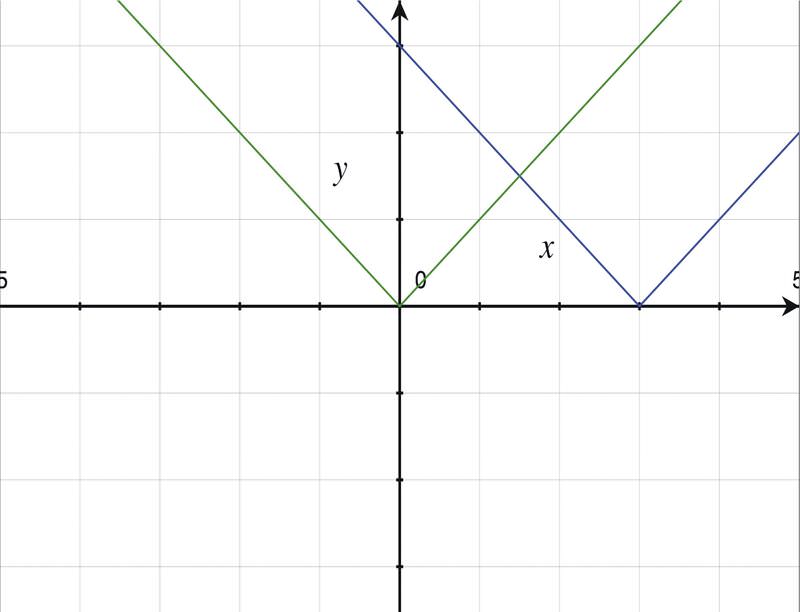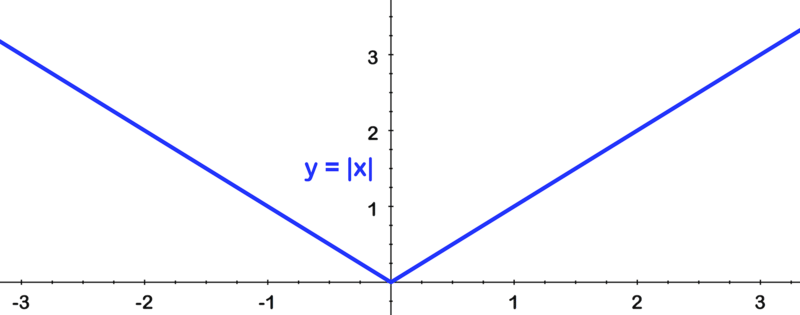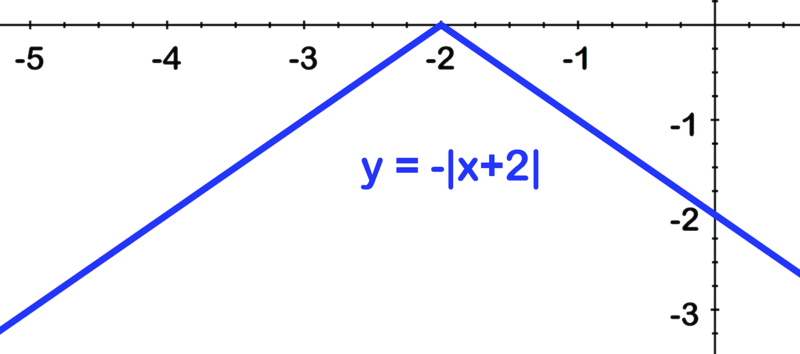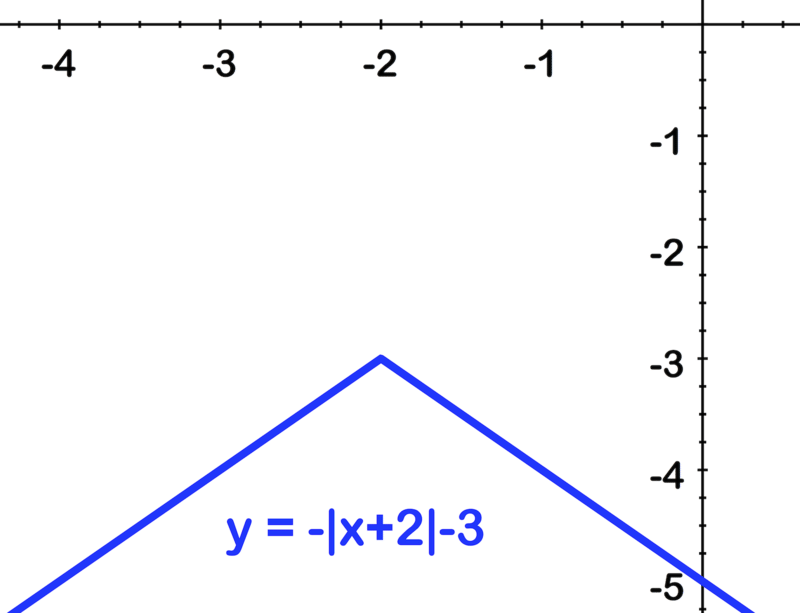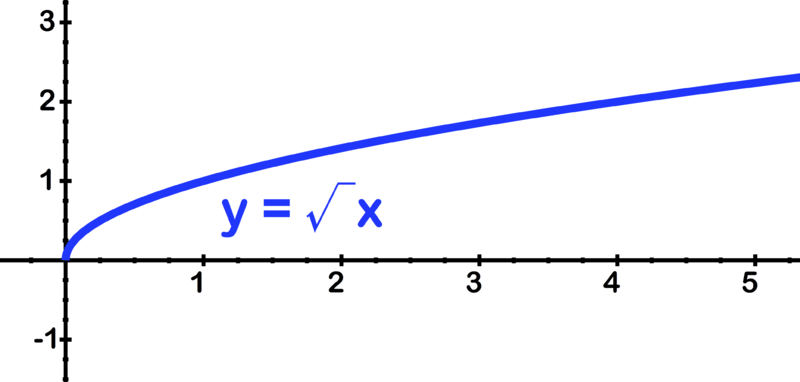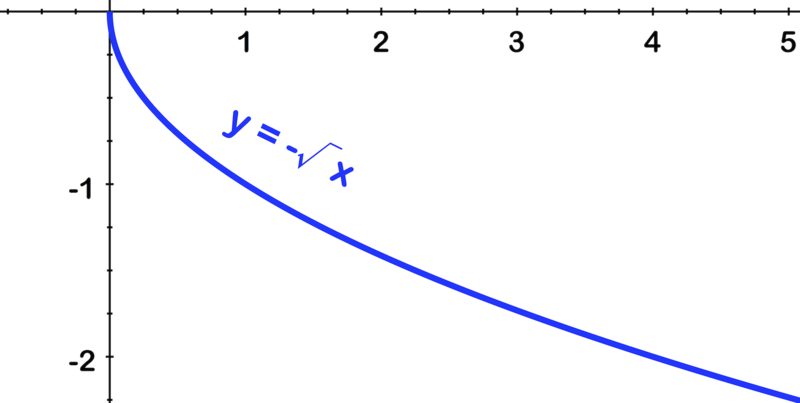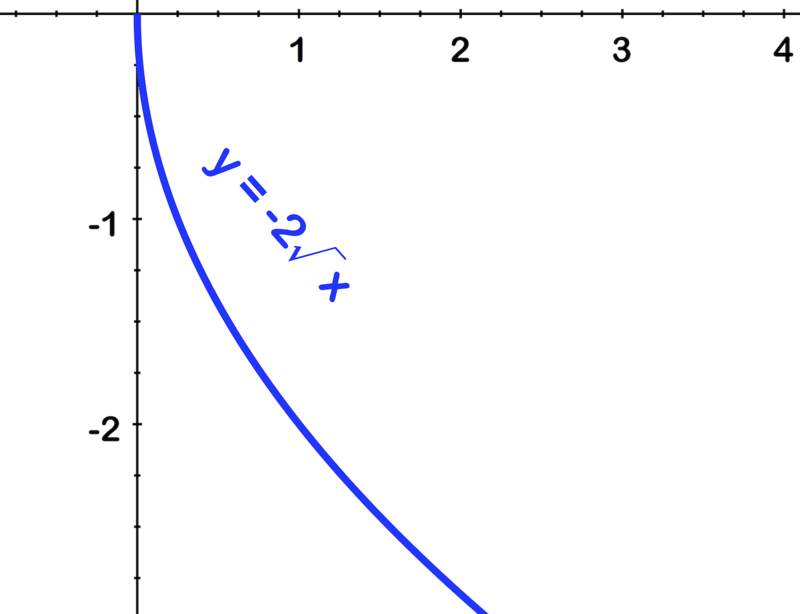组合转换
章节大纲
-
How do the different forms of transformations result in the differences between the basic parent functions we have explored and some of the more complex graphs you may have seen? It has likely occurred to you that these individual transformations are not enough to result in such significant differences. How do we then apply the individual transformations so that the more complex graphs may be understood?
::不同形式的变换如何导致我们所探讨的基本父函数与一些你可能见过的更复杂的图表之间的差异? 你可能认为这些个别的变换并不足以导致如此显著的差异。 那么我们如何应用个别变换, 才能理解更复杂的图表呢 ?Combining Transformations
::组合转换By combining shifts , reflections , and vertical and horizontal stretches and compressions, a simple parent function graph can represent a much more advanced function.
::简单的父函数图形通过将轮班、反射、垂直和水平拉伸和压缩结合起来,可以代表一个更高级的函数。Consider the equation y = 2( x - 3) 2 + 1. We can compare the graph of this function to the graph of the parent y = x 2 : the graph represents a vertical stretch by a factor of 2, a horizontal shift 3 units to the right, and a vertical shift of 1 unit.
::考虑公式y = 2(x-3)2 + 1. 我们可以将此函数的图形与父 y = x2 的图形进行比较: 该图形代表垂直伸展2倍、向右水平移动3个单位和1个单位的垂直移动。We can use this relationship to graph the function y = 2( x - 3) 2 + 1. You can start by sketching y = x 2 or y = 2 x 2 . Then you can shift the graph 3 units to the right, and up 1 unit.
::我们可以使用此关系来绘制函数 y = 2(x - 3) 2 + 1 。 您可以先绘制 y = x2 或 y = 2x2 。 然后您可以将图 3 单位向右移动, 然后向上移动 1 个单位 。Examples
::实例Example 1
::例1Earlier, you were asked how to apply individual transformations to a more complex graph.
::早些时候,有人问您如何将个人变换应用到更复杂的图表中。Graph the function below using your knowledge of the parent function y = | x | and your knowledge of transformations.
::下面的图解函数,使用您对父函数 =\\\\\\\\\\\\\\\\\\ k了解的变换。f ( x ) = -|x| + 3
::f(xx) = - x+ 3The parent graph of this function is the graph of y = | x |, reflected over the x -axis, and shifted up 3 units. The question is: which transformation do you perform first?
::此函数的母图是 y = x 的图形,在 x 轴上映,然后向上移动 3 个单位。 问题是: 您首先要进行哪种变换 ?We can answer this question if we consider a few key function values. The table below shows several function values for f ( x ) = -| x | + 3:
::如果我们考虑几个关键函数值,我们可以回答这个问题。下表显示f(x) = -x + 3的多个函数值:x -3 -2 -1 2 0 3 1 2 3 0 From the function values in the table we can see that the function increases until a vertex at (0, 3), and then it decreases again. This tells us that we can obtain the graph if we first reflect y = | x | over the x -axis (turn the “v” upside down), and then shift the graph up 3 units.
::从表格中的函数值中,我们可以看到函数会增加,直到在(0, 3) 时的顶点,然后又会再次下降。这告诉我们,如果我们首先在 x 轴上反射 y = x (将“V”倒转),然后将图形向上移动到 3 个单位,我们就可以获取图形。We can also justify this ordering of the transformations of we think about the . To find any function value we take an x value, find its absolute value , find the negative of that number, and then add 3. This is the same as the order of the transformation: reflection comes before shifting up.
::我们还可以解释我们思考的变换顺序。为了找到任何函数值,我们选择了 x 值,找到其绝对值,找到数字的负值,然后添加3。这与变换的顺序是一样的:反省在上升之前就会出现。Example 2
::例2Describe the relationship between the graphs of and .
::描述 f( x) =3( x+7) 3+5 和 g( x) =x3 的图形之间的关系。The graph of is the graph of , stretched vertically (made narrower) by a factor of 3, shifted 7 units to the left, and then shifted 5 units up.
::f( x) = 4( x+8) 3-3 的图形是 g( x) =x3 的图形, 垂直伸展( 缩放) 3 乘以 3, 向左移动 7 个单位, 然后向上移动 5 个单位 。Example 3
::例3Graph the function below using your knowledge of the parent function y = | x | and your knowledge of transformations.
::下面的图解函数,使用您对父函数 =\\\\\\\\\\\\\\\\\\ k了解的变换。g ( x ) = |- x + 3|
::g(x) = -x + 3This function represents a horizontal shift of y = | x |, and a reflection over the x -axis. Before graphing, consider a few function values:
::此函数代表 y = x 和 x 轴的反射。在图形化之前,请考虑几个函数值:x g ( x ) = 4 0 3 1 2 From the values in the table, we can see that the vertex of the graph is at (3, 0). The graph is shown below.
::从表中的值可以看出,图表的顶点是(3,0),图如下。The graph looks the same as the graph of y = | x - 3|. This is the case because y = |- x + 3| = |-( x - 3)|, and because |- a | = | a | for all values of a, then |-( x - 3)| = | x - 3|. So the original function is equal to | x - 3|.
::图表与 y = x - 3 的图形看起来相同。 这是因为 y = x + 3 = - (x - 3) , 并且因为 - a = a = a a = 所有值, 然后 - (x - 3) = x - 3 。 因此, 原始函数等于 x - 3 。We can still think of this graph as a reflection: if we reflect y = | x | over the x-axis , the graph remains the same, as it is symmetric over the x -axis. Then we shift the graph 3 units to the right. What is important to note here is that in order to “read” the equation as a horizontal shift, the entire expression inside the function (in this case, inside the absolute value) must be negated.
::我们仍然可以将这个图表视为一个反射:如果我们在 x 轴上反射 y = x , 则该图保持不变, 因为它是 X 轴上的对称。 然后我们将图3 单位移到右边。 在此必须注意的是, 为了“ 读” 方程式, 如果要进行横向转换, 函数( 此处为绝对值内) 的全部表达方式必须倒置 。Example 4
::例4Sketch the graph of .
::绘制 y1x+23 的图解 。The key to multiple transformations is to do them in order. Another way to keep track of which operations to do in which order is to just do them in the order they appear in the equation, left to right.
::多重转换的关键是按顺序进行。 另一种方法可以追踪操作要做什么, 也就是按照方程式中出现的顺序, 左向右键进行操作 。To sketch start with the parent equation: and complete the transformations left to right:
::以父方程( f( x) ) 开始绘制 y1 x+23, 完成左向右的转换 :First, reflect over the x-axis :
::首先,反射 X 轴 :Second, shift left by 2:
::第二,左转2:Finally, shift down by 3:
::最后,下调3:Example 5
::例5Sketch the graph of .
::绘制 f( x)\\% 2x- 1 的图形 。The key to multiple transformations is to do them in order. Another way to keep track of which operations to do in which order is to just do them in the order they appear in the equation, left to right.
::多重转换的关键是按顺序进行。 另一种方法可以追踪操作要做什么, 也就是按照方程式中出现的顺序, 左向右键进行操作 。To sketch the graph of start with the parent
::绘制 f( x)\\\\\\% 2x- 1 以父 y=x 开头的 f( x)\\\\\ 2x- 1 的图形First, reflect over the x-axis :
::首先,反射 X 轴 :Second, stretch by 2:
::第二, 伸展至 2 :Third, shift right by 1:
::第三,右转1:Review
::回顾-
What part of the function
shifts the graph of
vertically?
::函数 g( x) ( f( x)+1) ( x3+1) 的哪个部分垂直移动 f( x) 的图形 ? -
What part of the function
reflects the graph of
across the x-axis?
::函数 g(x) (f(x)+1) 的哪个部分反映 x 轴横跨 x 轴的 f(x) 图形 ? -
What is different between the functions
and
that changes the appearance of the graph?
::函数 g( x) ( x3+1.0) 和 h( x)\\\\ x3+1.0 之间有什么不同?
This example shows the effect of shifting a graph vertically and then stretching it vertically.
::此示例显示垂直移动图形然后垂直拉伸该图的效果 。-
Given the function
, what is it that
shifts
the graph of
vertically? a)
b)
c)
::根据 函数 g( x) = 3. 0( f( x) +2. 0) = 3. 0( x2+2. 0) = 3. 0( x2+2. 0) , f( x) 垂直移动图形的是什么? a) 3. 0 b) x2 c) 2. 0 。 -
Given the function
, what is it that
stretches
the graph of
vertically? a)
b)
c)
::根据 函数 g( x) = 3. 0( f( x) +2. 0) = 3. 0( x2+2. 0) = 3. 0( x2+2. 0) 。 -
What part of the equation
shifts the graph of
horizontally?
::方程式 k( x) ( x+1) 3 的哪个部分水平移动 j( x) = x3 的图形 ? -
What part of the equation
reflects the graph of
across the x-axis?
::方程式 k( x) {( x+1) } (x+1) 3 的哪个部分反映 X 轴的 j( x) = x3 的图形 ? -
Given the function
, what is it that
shifts
the graph of
horizontally?
::鉴于函数 g( x) = 3. 0( f( x) +2. 0) = 3. 0( x+2. 0) 3, 是什么水平移动 f( x) 的图形 ? -
Given the function
, what is it that
stretches
the graph of
vertically ?
::鉴于函数 g( x) = 3. 0( f( x) +2. 0) = 3. 0( x2+2. 0) 3, 垂直延伸 f( x) 图形的是什么 ? -
The graph of
is
reflected across the x-axis. The graph of
is
reflected across the y-axis. The graph of
is
reflected across the x-axis and the y-axis. When graphing
does the order in which the reflections occur matter? (Does it matter which axis we reflect the graph across first?)
::g(x) 的图形是 f(x) 。 h(x) 的图形是 f(x) 反射到 y 轴。 j(x) 的图形是 f(x) 反射到 x 轴和 y 轴。 当图形显示到 j(x) 时, 反射发生的顺序重要吗? (哪个轴重要吗?) -
Given the function
, write a function
that is:
reflected across the y-axis and then stretched vertically by 8.
::根据函数 f( x) =x3, 写一个函数 g( x) , 即: f( x) 反射到 Y 轴, 然后垂直伸展到 8 。 -
How do you transform the graph of:
so that it looks like the graph of:
? a)Stretch it by a factor of ¼ and shift it up 6 units. b)Stretch it by a factor of 6 and shift it left 4 units. c)Stretch it by a factor of 4 and shift it down 6 units. d)Stretch it by a factor of 4 and shift it up 6 units.
::如何将 f( x) =x3 的图形转换为 f( x) = x3 = x3 = 6? a) 的图形 : f( x) = 4x3 + 6 ? a) 的图形 , 将它平整为 1⁄4 的系数, 将其向上移动 6 个单位 。 b) 将它平整为 6 的系数 。 c) 将它平整为 4 的系数, 将它向下移动 6 个单位 。 d) 将其平整为 4 。 -
How do you transform the graph of:
so that it looks like the graph of:
? a)Reflect it across the x-axis and shift it 4 units down. b)Reflect it across the y-axis and shift it 4 units up. c)Reflect it across the x-axis and shift it 4 units up. d)Reflect it across the y-axis and shift it 4 units down.
::您如何转换 f( x) =x 的图形, 使其看起来像 f( x) x-4 的图形 ? a) 将其反射到 x 轴上, 并将其向下移动 4 个单位 。 b) 反射到 y 轴上, 将其向上移动 4 个单位 。 c) 反射到 x 轴上, 将其向上移动 4 个单位 。 d) 反射到 y 轴上, 将其向下移动 4 个单位 。 -
The graph below is a transformation of a common function. What is the common function that has been transformed? a)
b)
c)
d)
::下图是常见函数的转换。被转换的普通函数是什么? a)yxb)y=x c)y=x2 d)y=x3 -
How has the function in Q# 14 been transformed? a) Reflected across the y-axis and shifted right 3 units. b) Stretched vertically by a factor of 3 and shifted right 1 unit. c) Reflected across the x-axis and shifted up 3 units. d)Reflected across the x-axis and shifted left 4 units.
::14 的函数是如何转换的? a) 反射到Y轴和向右移动3个单位。 b) 垂直拉伸到3个系数,向右拉伸到1个单位。 c) 反射到x轴,向上移到3个单位。 d) 反射到X轴,向左移到4个单位。 -
Write a function
whose graph looks like the graph of
reflected across the x-axis and shifted up 1 unit.
::写入函数 g( x) , 其图形看起来像 f( x) 的图形, 反射到 x 轴, 并移动到 1 个单位. g( x) = ? -
Choose the function whose graph looks like the graph of
shifted to the right 2 units and reflected across the y-axis. a)
b)
c)
d)
::选择一个函数, 其图形看起来像 f( x) =x3 的图形, 移到右侧 2 单位, 反射到 Y 轴 。 a) f( x) = (- x- 2) = (- x) 3, b( f) (x) = (- x+2) 3, c( f) (x) = (x-2) 3, f( f) = (x) 3
Review (Answers)
::回顾(答复)Click to see the answer key or go to the Table of Contents and click on the Answer Key under the 'Other Versions' option.
::单击可查看答题键, 或转到目录中, 单击“ 其他版本” 选项下的答题键 。 -
What part of the function
shifts the graph of
vertically?

